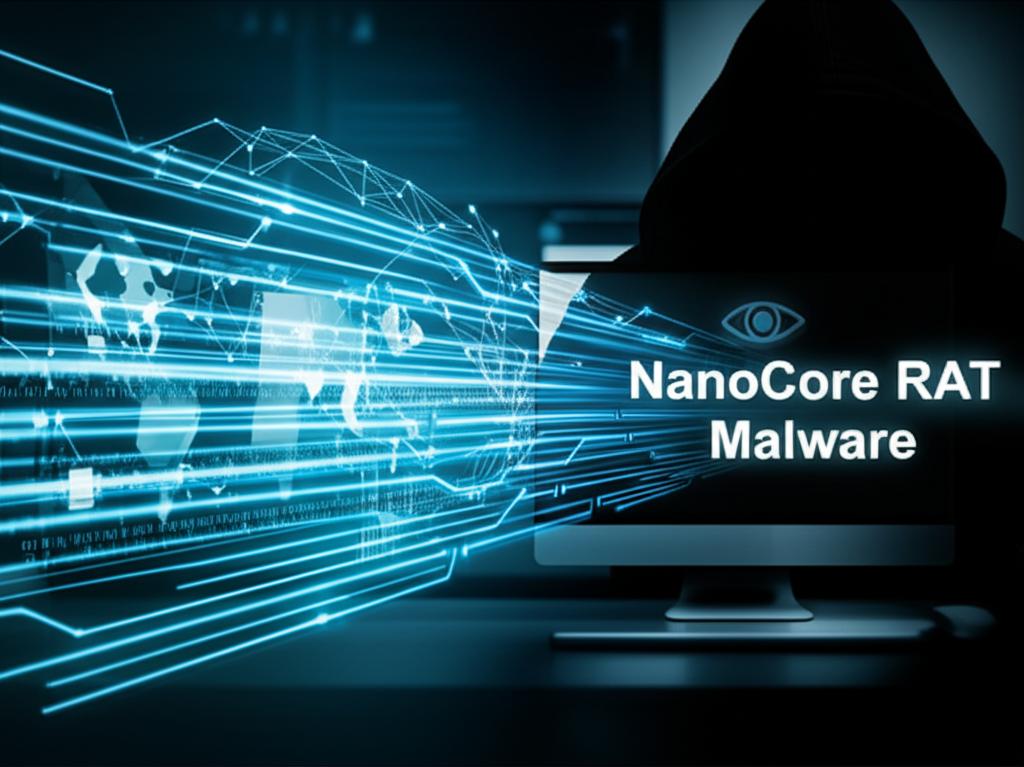NanoCore RAT Malware: An Alarming Deep Dive into a Potent Cyber Threat
Understanding the Insidious Nature of NanoCore RAT Malware
In the ever-evolving landscape of cyber threats, certain names consistently resurface due to their persistent danger and sophisticated capabilities. Among these, NanoCore RAT Malware stands out as a particularly potent Remote Access Trojan (RAT) that has plagued individuals and organizations for years. This article will dissect what makes NanoCore RAT Malware such an alarming threat, its operational mechanics, and crucial strategies for defense.
What is NanoCore RAT Malware?
NanoCore RAT Malware is a notorious Remote Access Trojan designed to grant unauthorized attackers comprehensive control over a victim’s computer system. First identified around 2013, it quickly gained popularity among cybercriminals due to its user-friendly interface, robust feature set, and relatively low cost. Unlike simpler malware, NanoCore RAT Malware isn’t just about data theft; it’s about complete system usurpation.
Key Capabilities of NanoCore RAT Malware:
- Remote Desktop Control: Attackers can view and manipulate the victim’s desktop in real-time.
- Keylogging: Records every keystroke, capturing sensitive information like passwords, credit card numbers, and personal communications.
- Webcam and Microphone Access: Secretly activates the device’s camera and microphone to spy on the victim.
- File Management: Allows for uploading, downloading, deleting, and executing files on the compromised system.
- Password Recovery: Extracts stored credentials from web browsers and other applications.
- Process and Service Management: Starts, stops, or kills running processes and services.
- Registry Editor: Manipulates system settings by modifying the Windows Registry.
- DDoS Capabilities: Can turn infected machines into bots for Distributed Denial of Service (DDoS) attacks.
How NanoCore RAT Malware Spreads
The distribution methods for NanoCore RAT Malware are typical of many sophisticated cyber threats, often relying on social engineering and exploiting vulnerabilities:
- Phishing Campaigns: Malicious emails containing infected attachments (e.g., weaponized documents, executables disguised as legitimate files) or links to compromised websites are a primary vector.
- Exploit Kits: Leveraging software vulnerabilities in web browsers or plugins to silently install the malware when a user visits a malicious website.
- Bundled Software: Disguising the malware within legitimate-looking software installers, freeware, or pirated applications.
- Malvertising: Using malicious advertisements on legitimate websites to redirect users to exploit landing pages.
The Devastating Impact of a NanoCore RAT Infection
An infection with NanoCore RAT Malware can lead to a cascade of severe consequences for individuals and organizations:
- Data Breach and Identity Theft: Sensitive personal and financial data can be stolen, leading to fraud and identity theft.
- Financial Loss: Direct theft from bank accounts, unauthorized purchases, or ransomware demands.
- Privacy Invasion: Webcam and microphone access can lead to blackmail and severe privacy violations.
- Corporate Espionage: For businesses, intellectual property, trade secrets, and confidential communications can be compromised.
- System Instability: The malware’s operations can degrade system performance or lead to crashes.
- Further Infections: NanoCore can serve as a backdoor for installing other types of malware.
Protecting Against NanoCore RAT Malware: Essential Strategies
Mitigating the threat of NanoCore RAT Malware requires a multi-layered security approach and constant vigilance:
- Robust Antivirus/Anti-Malware Solutions: Install and keep reputable security software updated to detect and remove NanoCore.
- Email Security: Be wary of suspicious emails, unsolicited attachments, and links. Verify the sender before clicking.
- Regular Software Updates: Keep your operating system, web browsers, and all applications patched to fix known vulnerabilities that NanoCore might exploit.
- Strong, Unique Passwords and MFA: Use complex passwords and enable Multi-Factor Authentication (MFA) wherever possible to protect accounts even if credentials are stolen.
- Firewall Protection: Configure your firewall to monitor and control incoming and outgoing network traffic, blocking unauthorized connections.
- Network Monitoring: Implement solutions that can detect unusual network activity indicative of a RAT infection.
- Employee Training: Educate users about phishing, social engineering tactics, and safe browsing habits.
- Regular Backups: Maintain offline backups of critical data to ensure recovery in case of data loss or encryption.
Conclusion: Staying Ahead of NanoCore RAT Malware
NanoCore RAT Malware remains a significant threat due to its versatility and ease of use for attackers. Its capacity for deep system compromise makes it a favorite tool for cybercriminals targeting both individuals and enterprises. By understanding its mechanisms and adopting a proactive, comprehensive cybersecurity posture, we can significantly reduce the risk of falling victim to this potent and alarming cyber threat. Stay informed, stay vigilant, and prioritize your digital security.







